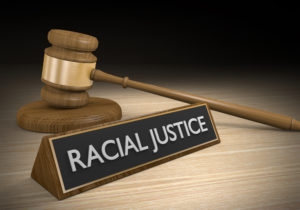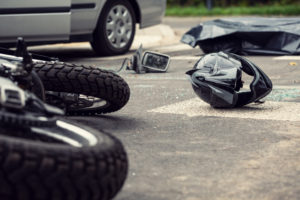As you drive down the roadway, you probably never give a thought to the guardrails. You just know they are there; you know they will protect you from going off the road or into oncoming traffic, right? Maybe not. Unfortunately, many highway guardrails are defective and have actually been the cause of numerous fatal accidents nationwide. I wrote a blog last year after several people died in Tennessee due to the Lindsay X-LITE guardrail ends.
The X-LITE guardrail, manufactured by Lindsay Transportation Solutions, came under intense scrutiny after several guardrails failed on impact during high-speed collisions. Instead of buckling and redistributing energy to thrust vehicles back onto roadways, the faulty guardrails can lock up and impale vehicles, causing devastating, if not fatal, injuries.
The problem with X-LITE guardrails has become so serious that some states have taken action. Tennessee said it would spend millions of dollars to repair and replace most of the 1,700 to 1,800 X-LITE guardrail ends on state roads. Missouri has stopped replacing the X-LITE guardrails when they wear out, but hasn’t made a decision about removing and replacing existing guardrails. Virginia removed the X-LITE from its approved products list in 2016. It is now replacing the X-LITES that are installed on roads with a speed limit of 55 mph or more. At this time, there are no plans to replace the ones currently on roads with speed limits under 55 miles per hour.
Most recently, West Virginia became the latest to announce that it will no longer install the Lindsay X-LITE guardrails. However, there are 900 currently in place which will remain for now.
Lindsay Transportation Solutions contends that “its product has passed crash and safety tests per Federal standards, and there is no road safety equipment that can avoid an injury in every accident when a driver does not stay on the road.”
Defective guardrails first came to light in 2014. This includes the ET-Plus guardrail manufactured by Trinity Industries, which had been linked to several injuries and deaths. In a noteworthy whistleblower lawsuit, Trinity was ordered to pay $663 million in penalties for defrauding the federal government after it was discovered the company shaved an inch off each end terminal without informing regulators and did not adequately test their products. While an inch might not seem like much, the new design radically changed the way the guardrail behaved in an accident. The shortened endcap did not deflect the guardrail away from the vehicle, but rather penetrated the vehicle like a spear. Why did Trinity change the design? To save $2 per unit. In the aggregate, this was calculated to save the company about $50,000 per year.
Ongoing efforts by victims’ families, attorneys, and safety advocates call attention to the fact that public safety should always be a top priority for product manufacturers. A Tennessee father, who says a defective guardrail caused his 17-year-old daughter’s death, even bought a 30-second ad spot on Super Bowl Sunday in hopes of garnering federal attention.
I commend those who have spent years bringing these defective guardrails to light and for their continuous fight for change. Let’s hope their advocacy will continue to make changes until all these defective guardrails are removed and replaced from our roadways nationwide.
Mark M. Bello is an attorney, certified civil mediator, and award-winning author of the Zachary Blake Legal Thriller Series. He is also the CEO of Lawsuit Financial and the country’s leading expert in providing non-recourse lawsuit funding to plaintiffs involved in pending litigation, a member of the State Bar of Michigan, a sustaining member of the Michigan Association for Justice, and a member of the American Association for Justice.
@thumbnail.jpg)
Experienced attorney, lawsuit funding expert, certified civil mediator, and award-winning author of the Zachary Blake Legal Thriller Series. The series features super-trial lawyer Zachary Blake handling "ripped from the headlines" legal and political issues of the day. The series currently consists of Betrayal of Faith, Betrayal of Justice, Betrayal in Blue, Betrayal in Black, and Betrayal High, with a sixth Zachary Blake novel due out later this year. To learn more about these topical social justice legal thrillers. please visit markmbello.com. Mark is a member of the State Bar of Michigan, a sustaining member of the Michigan Association for Justice, and a member of the American Association for Justice.










2 Comments
Roy Riedl
This is a one sided commentary. I realize you're appeal to those people not in the industry and the hope of increased/new business. Please be more responsible and get information from all sides. was the driver impaired? driving at an excessive speed? was the terminal in perfect condition when hit or did the DOT fail to repair damage, was it installed properly and inspected after installation etc etc etc. there is so much more to all this.
Christy
Roy,
This doesn’t seem one-sided to me. Mr. Bello has given the facts and I just did some research on the case you are referring to. I wonder, did you? If so, you would have found that just days before the girl’s death, the same guardrail that impaled her was removed from the State’s qualified products list out of concerns. Tennessee is not the only state that is no longer using that guardrail due to the same concerns. Despite whether the crash was the teen’s fault or not, the guardrail is supposed collapse like a telescope when hit on the end, not impale occupants of the vehicle. That is the point of Mr. Bello’s post.
What if you or a loved one was killed while driving Ford Pinto that was rear-ended? Would you blame the driver, Ford for putting a fire-bomb on the road, or both? What if you owned a vehicle with a Takata airbag that exploded? While I am sure Mr. Bello would always welcome increased/new business, I don’t see that as the intent of the post. However, manufacturing deadly and dangerous products and knowingly putting/keeping them on the market is about corporate profits, and….it is negligence. I agree with him that we must keep calling attention to dangerous products to keep us all safer.
Comments for this article are closed.